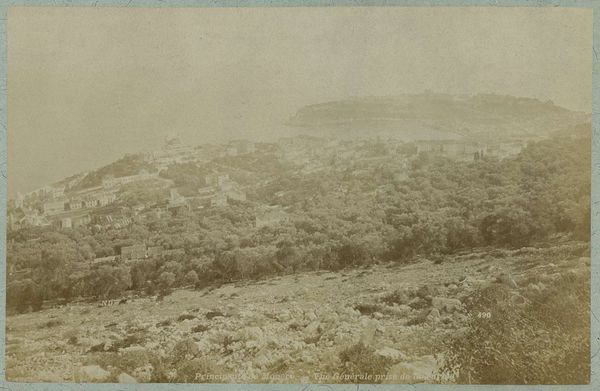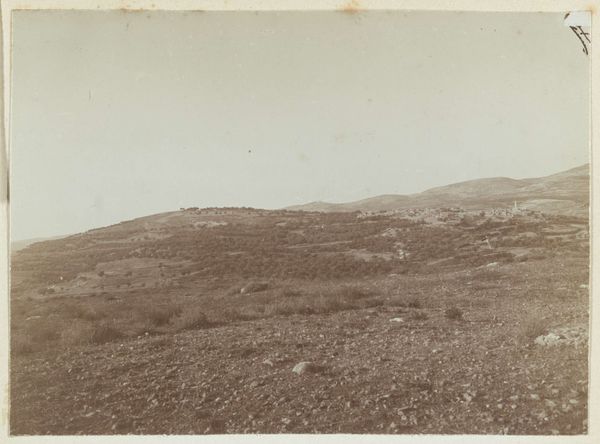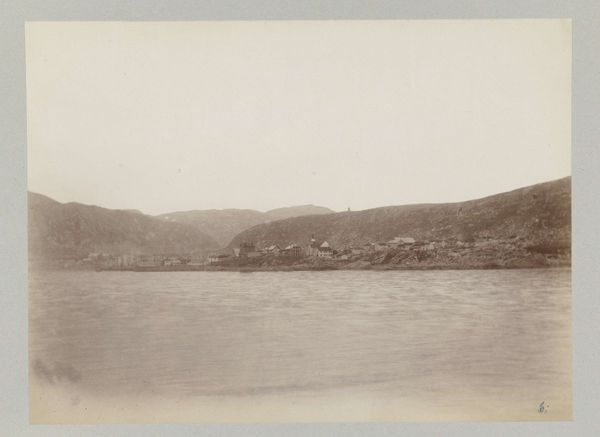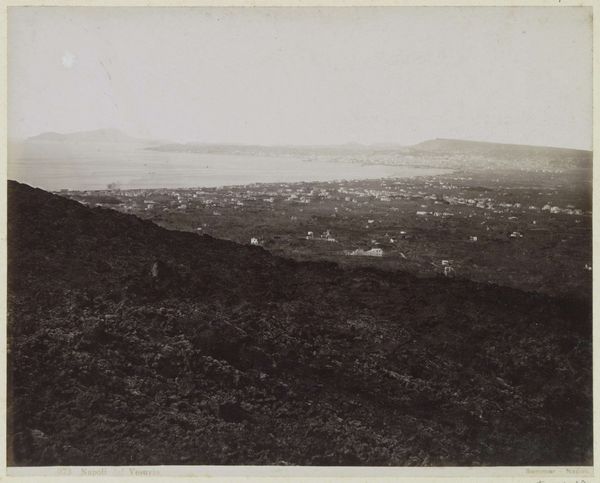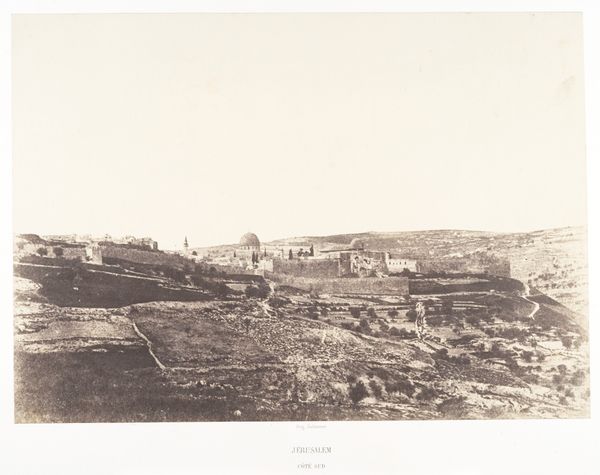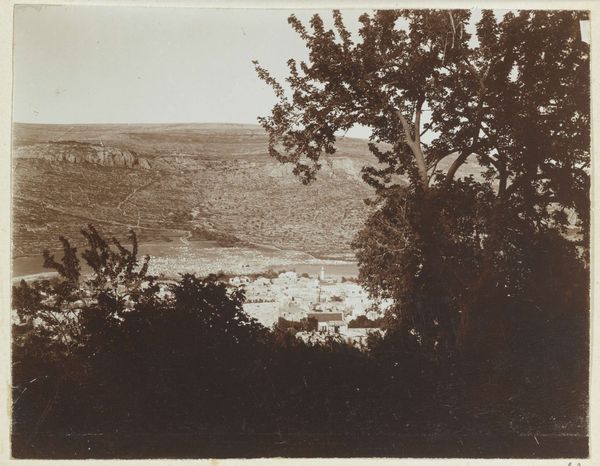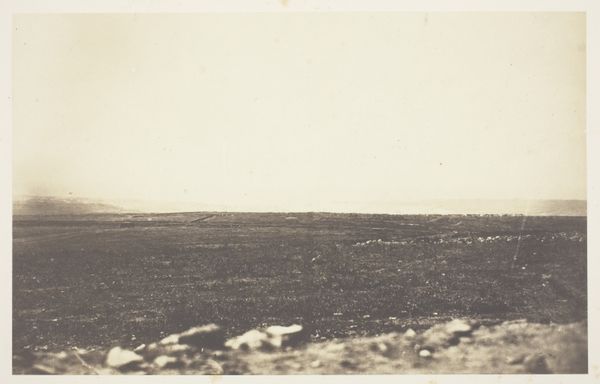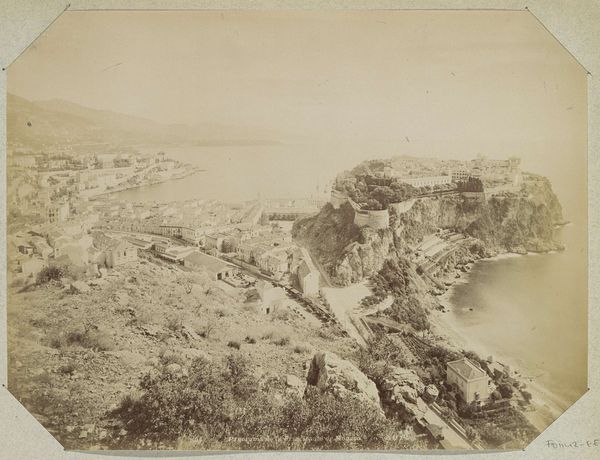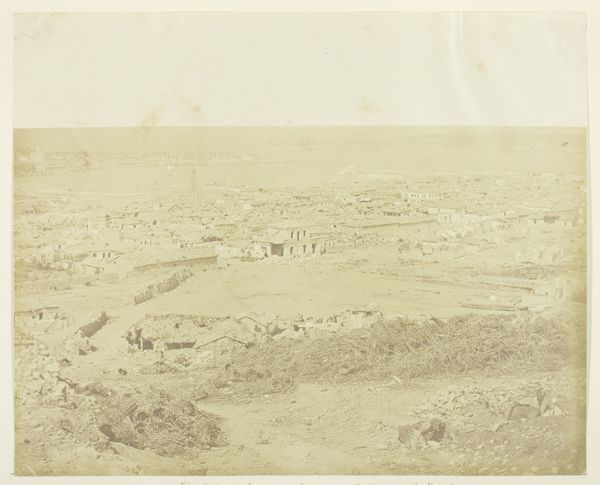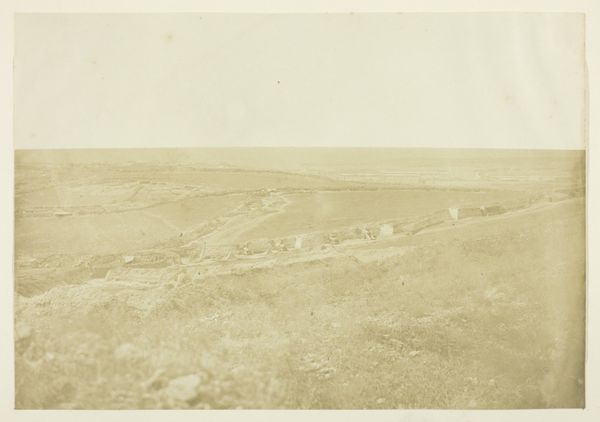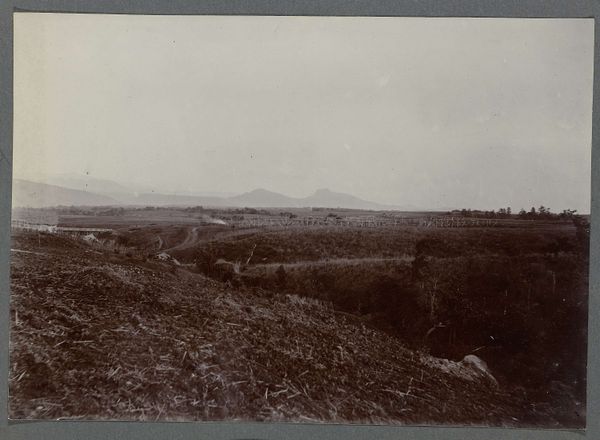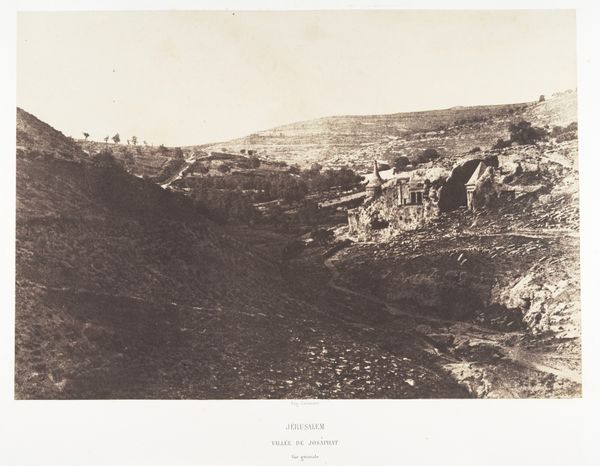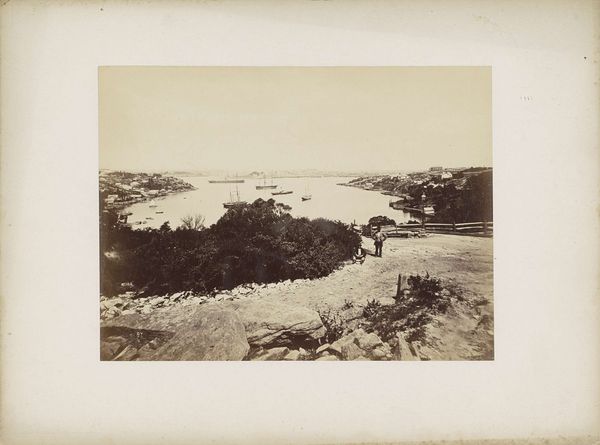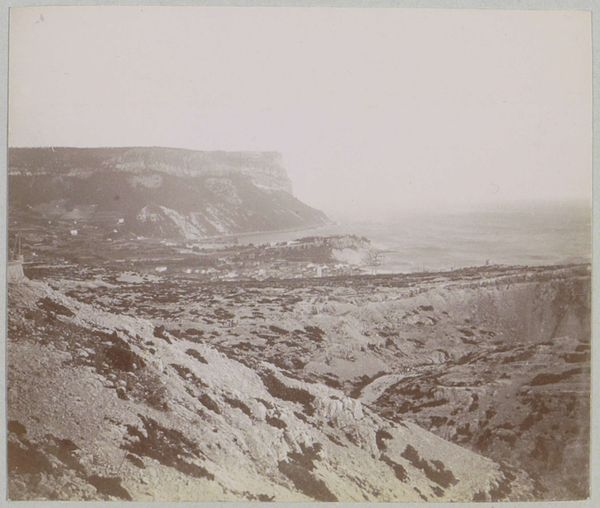
Gezicht op een kaap in Griekenland, aangeduid als Kaap Kolonnäs 1898
0:00
0:00
plein-air, photography
#
plein-air
#
landscape
#
photography
#
realism
Dimensions: height 79 mm, width 108 mm
Copyright: Rijks Museum: Open Domain
Curator: Standing before us is a photograph titled "Gezicht op een kaap in Griekenland, aangeduid als Kaap Kolonnäs," which translates to "View of a Cape in Greece, referred to as Cape Kolonnäs." It was taken in 1898 by Johannes Lodewijk Heldring. Editor: It's a landscape shrouded in sepia tones, the scene holds a melancholic weight. The rolling hills leading to the promontory feel barren, silent, even under a deceptively bright sky. Curator: The "plein-air" notation in the metadata is interesting, given photography's inherent reliance on capturing light and atmosphere. You get a real sense of the landscape through Heldring's use of light. The composition seems intentionally stark, drawing the eye to the edge of the cape itself. There is also a tension here—it's realist in style but the processing renders an almost abstract vision. Editor: Barren indeed—but I think Heldring is trying to convey the despoilation of landscape here. Given his personal history and politics, he would likely view the region through that lens. Look how the washed out tones give the piece an antique veneer, but the very name, 'cape,' implies a historical context that is elided here—perhaps a knowing nod towards the exploitation inherent in classicism. Curator: Or, perhaps that 'emptiness' offers viewers a blank slate, and opportunity to project their own cultural memories and meanings onto the Greek landscape? The sea is such an old symbol in Mediterranean cultures. Is Heldring trying to say something with its apparent serenity, and the starkness of the surrounding vegetation? It invites an almost meditative reflection on timelessness and cultural origins. Editor: That reading is interesting but overlooks what seem to me deliberate obscurations—Heldring invites meditation precisely by frustrating any meaningful attachment to the historical contexts inherent in his location. Curator: Whether purposeful erasure or invitation to meditation, the work succeeds at engaging viewers and asking important questions about place, memory, and photographic representation. Editor: Agreed. It compels us to re-examine our expectations, the narratives we construct around familiar, yet often contested, geographies.
Comments
No comments
Be the first to comment and join the conversation on the ultimate creative platform.
